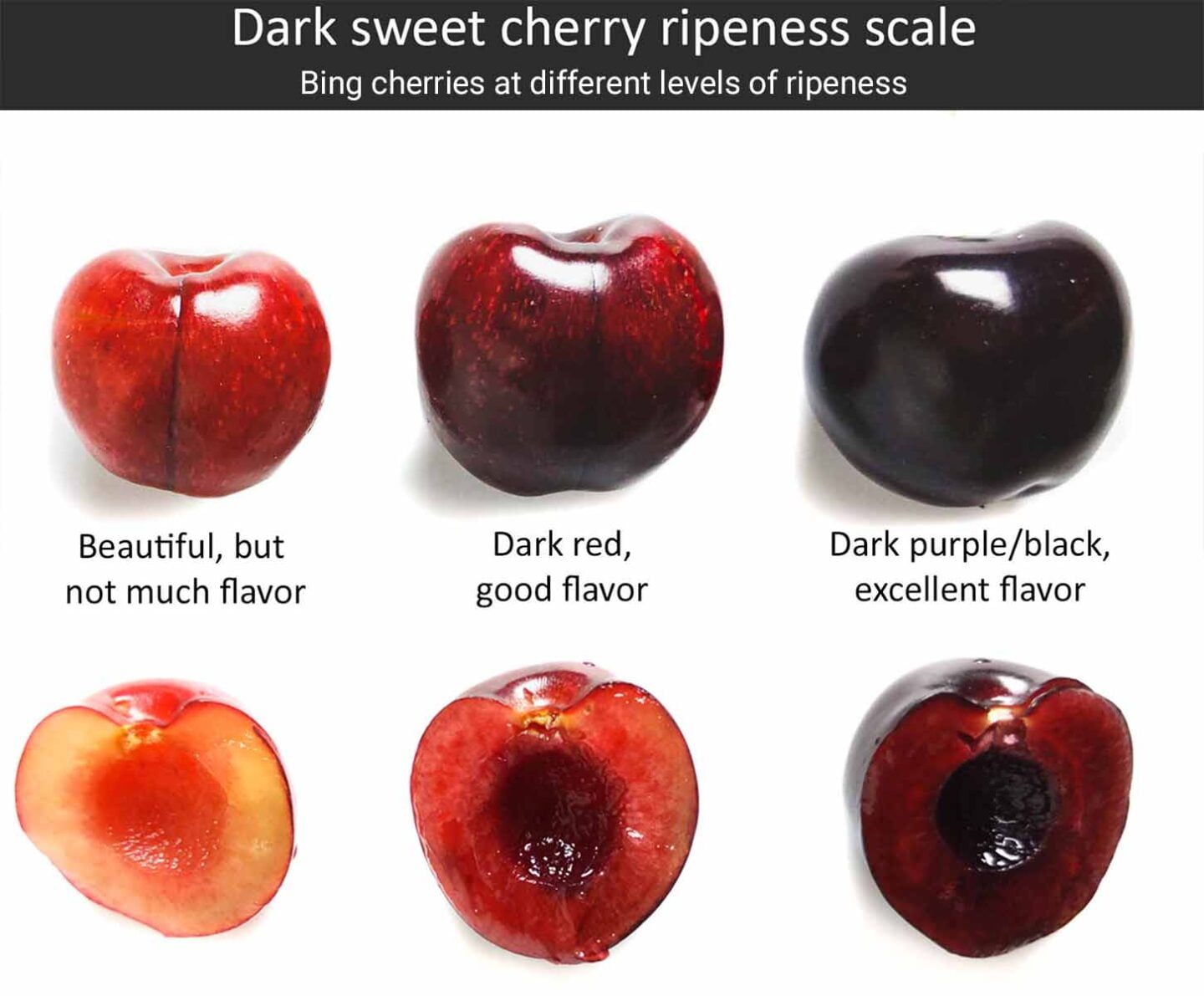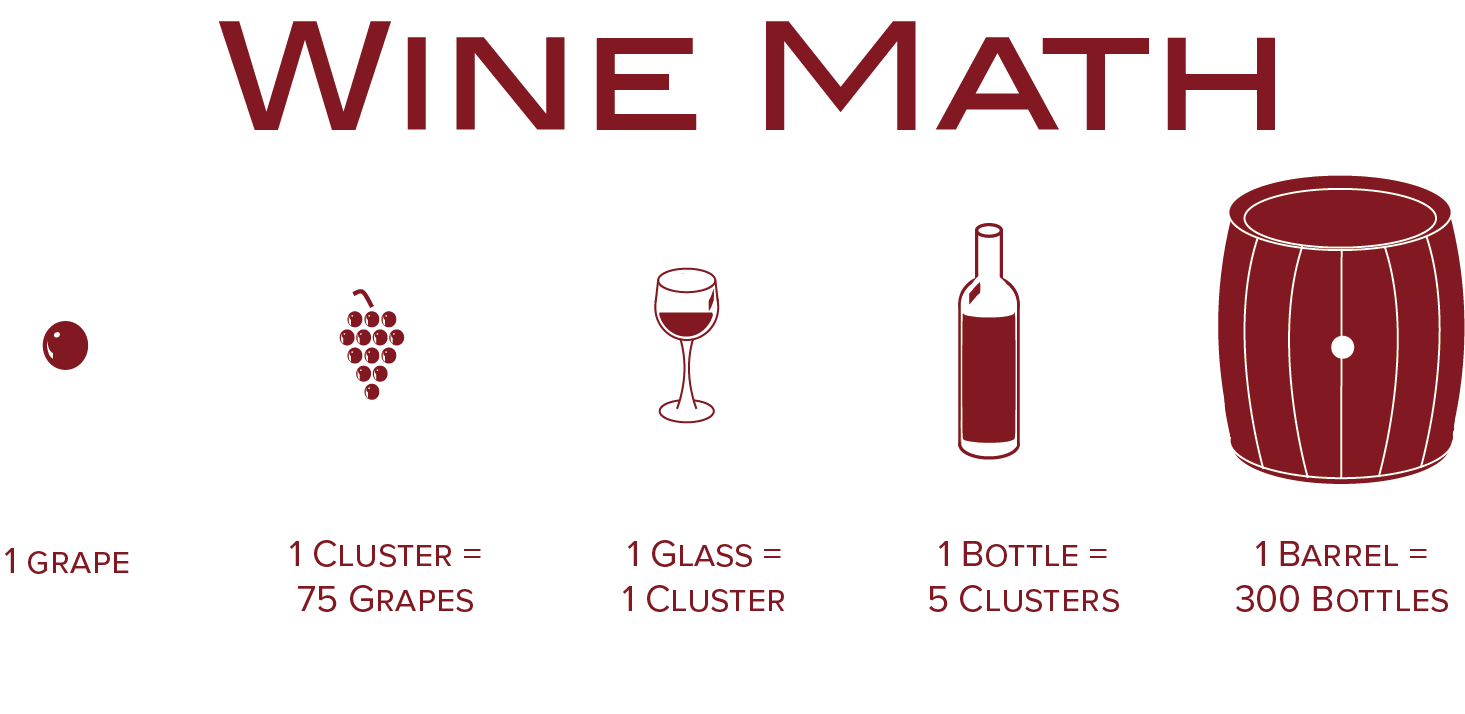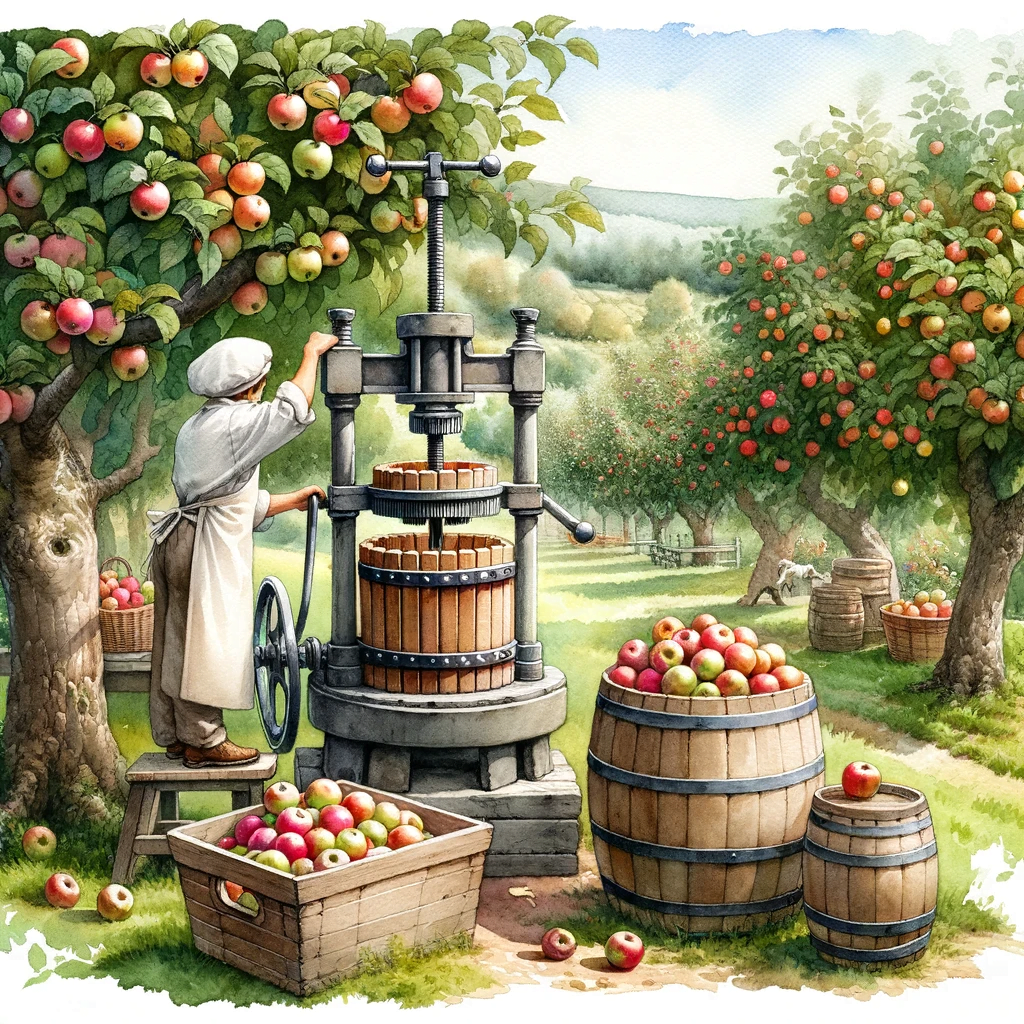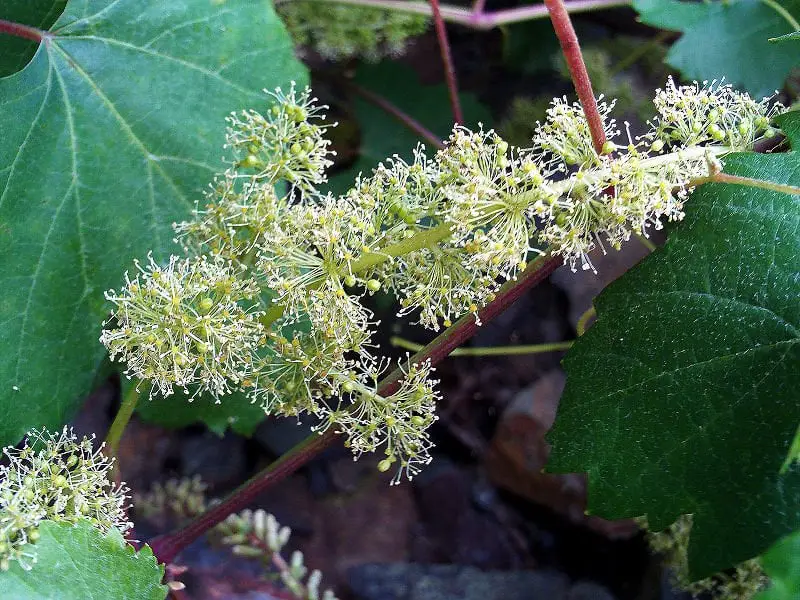Cherries, those delightful and vibrant fruits adored by many, have a season that we eagerly anticipate each year. As the temperatures rise and the days grow longer, countless individuals find themselves wondering, “When do cherries ripen?” This question is one that sparks curiosity and sets the stage for a captivating exploration into the intricate process behind the ripening of these beloved gems. So, if you’ve ever found yourself pondering the perfect timing for indulging in succulent cherries, join us as we uncover the factors that influence their ripening and discover the optimal moment to savor their sweet, juicy flavors.
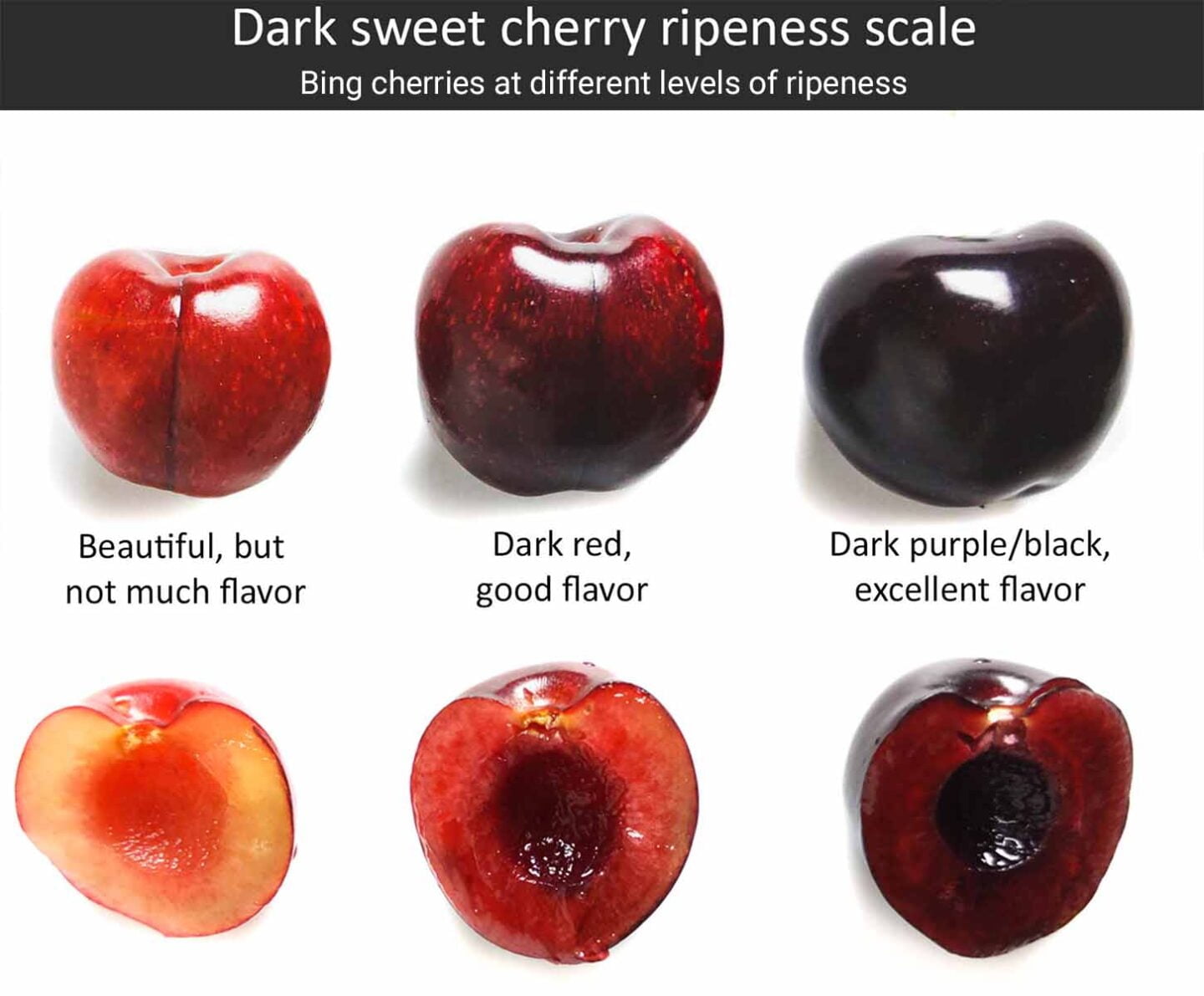
Factors Affecting Cherry Ripening
Cherry ripening is influenced by various factors, including climate, variety, location, soil, and pollination. These factors play a crucial role in determining the timing and quality of cherry ripening. Understanding these factors can help cherry growers optimize their cultivation practices and improve yield and fruit quality.
Climate
Climate is one of the primary factors affecting cherry ripening. Cherries thrive in regions with a temperate climate, characterized by distinct seasons. The ideal climate for cherry production is one with warm summers, mild winters, and a sufficient number of chilling hours during the dormant period. Adequate heat and sunlight are necessary for cherries to ripen properly.
Variety
Different cherry varieties have varying ripening times. Some varieties ripen earlier in the season, while others ripen later. Cherry growers often select a mix of early, mid-season, and late ripening varieties to extend their harvest period and supply cherries to the market for a longer time. The choice of variety also depends on the market demand, flavor preferences, and specific cultivation requirements.
Location
The geographic location of cherry orchards also affects the ripening time. Cherries grown in warmer regions tend to ripen earlier than those grown in cooler regions. The elevation of the orchard can also influence ripening time, with higher altitude locations having a slightly delayed ripening. Microclimates within the orchard, such as variations in sun exposure and wind patterns, can further impact cherry ripening.
Soil
Soil composition and fertility are vital for cherry trees’ growth and development, including the ripening process. Well-draining soils that retain adequate moisture while preventing waterlogging are ideal for cherry cultivation. Additionally, the pH level of the soil should be within the optimal range for cherries, typically around 6.0 to 7.0. Adequate soil nutrition and organic matter content also contribute to healthy cherry ripening.
Pollination
Pollination plays a crucial role in cherry fruit development and subsequent ripening. Cherries are primarily insect-pollinated, with bees being the most common pollinators. Adequate pollination ensures proper fruit set and development, leading to uniform ripening. Growers often place beehives strategically in the orchard during the flowering period to enhance pollination, resulting in better fruit quality and more consistent ripening.
Early Ripening Cherry Varieties
Early ripening cherry varieties are highly sought after by both consumers and growers. These varieties offer the advantage of being available in the market when there is less competition from other fruits. They are typically harvested in June and early July, marking the beginning of the cherry season. Here are some popular early ripening cherry varieties:
Royal Hazel
Royal Hazel cherries are known for their early ripening and excellent flavor. They have a dark red skin and a sweet, juicy flesh. These cherries are highly prized by cherry enthusiasts and are often used for fresh consumption, baking, and making preserves.
Early Burlat
Early Burlat cherries are among the earliest ripening varieties, often ready for harvest in late June. These cherries are medium-sized with a bright red color. They have a sweet and tangy flavor, making them suitable for various culinary applications.
Chelan
Chelan cherries ripen in early to mid-June, making them an attractive choice for early-season production. These cherries are large, firm, and have a deep red color. With their crisp texture and sweet flavor, Chelan cherries are popular for fresh eating and canning.
Bing
Bing cherries, although primarily considered a mid-season variety, start ripening towards the end of June, making them an early option for cherry enthusiasts. Bing cherries are known for their rich, dark red color and their sweet, succulent flesh. They are a classic and highly popular cherry variety.
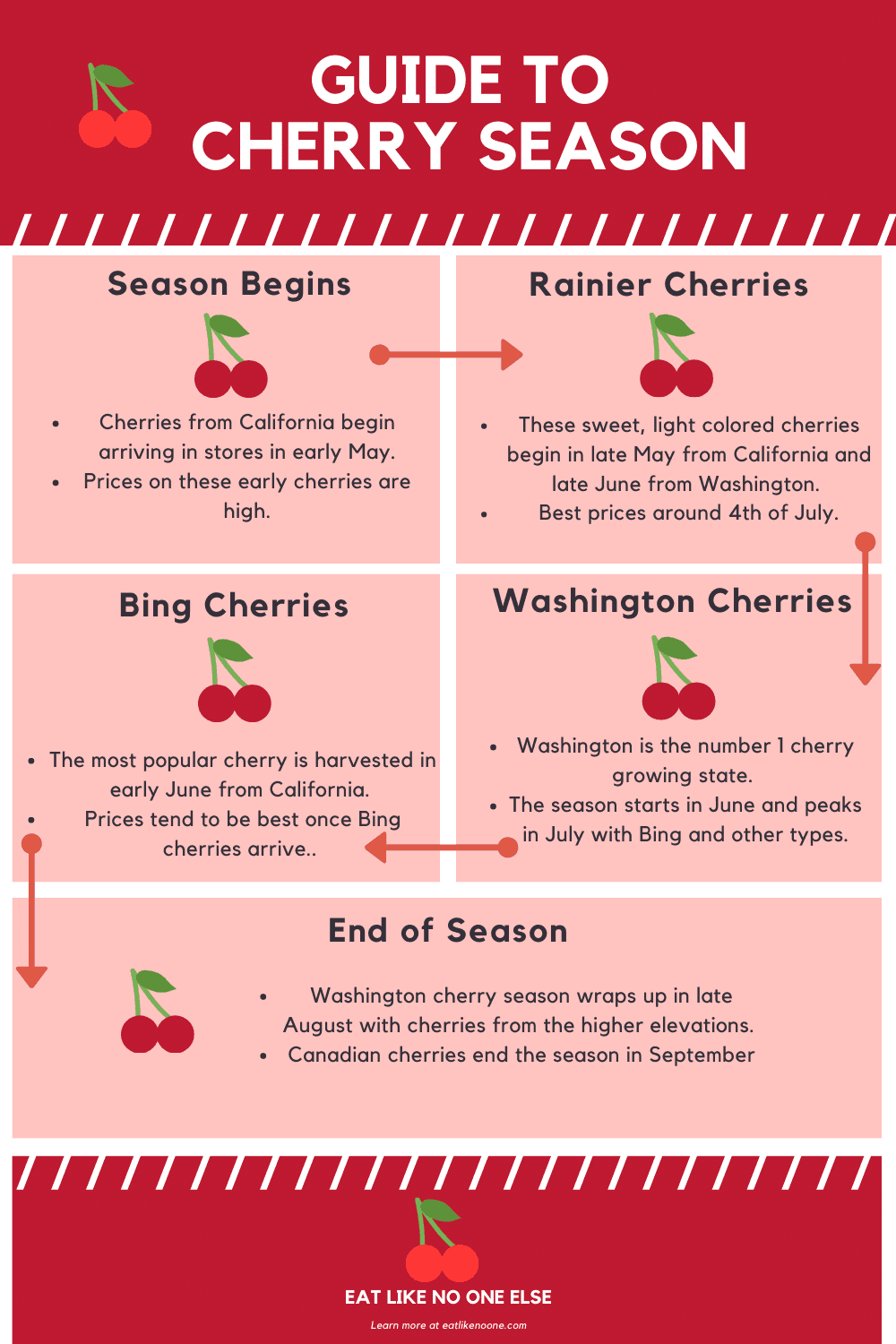
Mid-Season Ripening Cherry Varieties
As the cherry season progresses, mid-season ripening varieties come into fruition. These varieties ripen during the month of July, filling the gap between the early and late ripening cherries. Here are some notable mid-season cherry varieties:
Lapins
Lapins cherries are medium to large-sized and ripen in mid-July. They have a dark red to mahogany skin and a firm, juicy texture. These cherries are renowned for their exceptional sweetness and lingering flavor. Lapins cherries are commonly used for fresh consumption and in various culinary preparations.
Stella
Stella cherries are known for their vibrant dark red skin and juicy, flavorful flesh. They ripen in mid-July and have a sweet taste with a slight tartness. Stella cherries are versatile and can be enjoyed fresh, used in baking, or transformed into preserves.
Skeena
Skeena cherries are a sought-after mid-season variety known for their large size and excellent flavor. These cherries have a deep red to mahogany color and a crisp, juicy texture. With their balanced sweetness and acidity, Skeena cherries are perfect for eating fresh or incorporating into desserts.
Regina
Regina cherries ripen in mid to late July, offering a later mid-season option for cherry enthusiasts. These cherries are medium-sized and have a bright red to dark burgundy skin. Regina cherries are notable for their sweet and slightly tart flavor, making them suitable for various culinary uses.
Late Ripening Cherry Varieties
Late ripening cherry varieties extend the cherry season into late July and early August. These varieties are highly valued for their ability to ripen later in the season when there is less competition from other fruits. Here are some popular late ripening cherry varieties:
Sweetheart
Sweetheart cherries, as suggested by the name, are known for their exceptional sweetness and rich flavor. These cherries ripen in late July and have a large size with a dark red to almost black skin. Sweetheart cherries are prized for their firm, crisp texture and are commonly used for fresh consumption or in desserts.
Larian
Larian cherries are a late-season variety that ripens towards the end of July. These cherries have a deep red to mahogany skin and a sweet, juicy flesh. Larian cherries are notable for their excellent color and flavor, making them ideal for fresh eating or incorporating into various culinary creations.
Emperor Francis
Emperor Francis cherries ripen in late July to early August, making them one of the latest ripening cherry varieties. These cherries have a yellow-red skin with pink blush and a sweet, slightly tangy flavor. Emperor Francis cherries are treasured for their unique taste and are often enjoyed fresh or used in jams and jellies.
Black Republican
Black Republican cherries are known for their dark, almost black skin and large size. They ripen in late July, offering a late-season option for cherry lovers. These cherries have a rich, sweet flavor with a hint of tartness. Black Republican cherries are mainly used for fresh consumption and are sought after for their striking appearance.
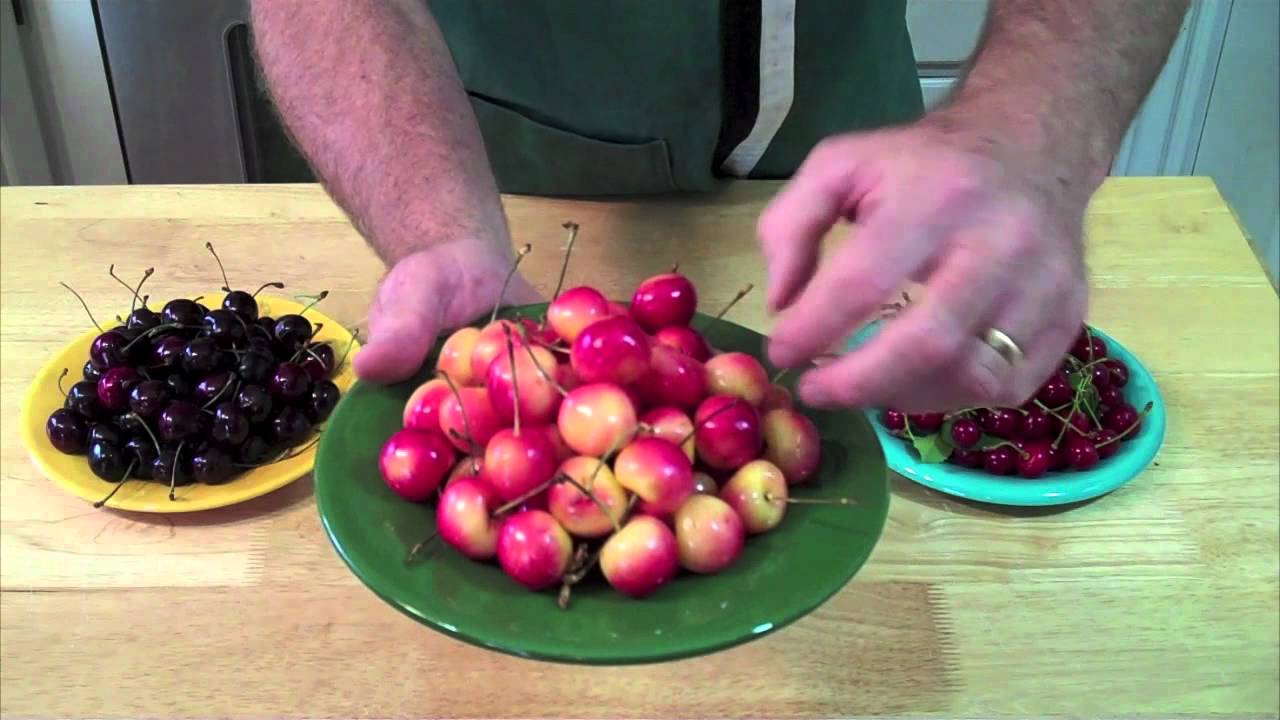
Ripening Timeframes
Knowing the ripening timeframes of different cherry varieties can help growers plan their harvest and supply cherries to the market at the right time. Here are the general ripening timeframes for early, mid-season, and late cherries:
Early Cherries: June to Early July
Early cherry varieties typically begin ripening in late June and continue through early July. These cherries kickstart the cherry season and are the first to appear in the market. Their early availability makes them highly anticipated by consumers and valuable to cherry growers.
Mid-Season Cherries: July
Mid-season cherry varieties ripen throughout the month of July, filling the gap between the early and late cherries. These cherries contribute to the peak of the cherry season, providing a wide range of options for consumers and ensuring a continuous supply of fresh cherries.
Late Cherries: Late July to Early August
Late cherry varieties ripen from late July to early August, extending the cherry season towards its conclusion. These cherries are valuable for their ability to ripen when most other fruits have already been harvested. Late cherries offer a unique flavor profile and keep the market supplied with fresh cherries during the final weeks of the season.
Identifying Ripe Cherries
To determine the optimal time for cherry harvest, it is crucial to be able to identify when the cherries are ripe. Several indicators can help in identifying ripe cherries:
Color
The color of cherries changes as they ripen. Most cherry varieties transition from green or yellow to various shades of red, ranging from bright red to dark burgundy or even black. The specific color depends on the variety. Ripe cherries usually have a deep, uniform color throughout the fruit.
Texture
The texture of ripe cherries is firm yet slightly yielding to the touch. Ripe cherries should not feel excessively soft or mushy. They should still have a slight crunch when bitten into but should not be overly hard.
Taste
The taste of cherries is a reliable indicator of their ripeness. Ripe cherries should be pleasantly sweet with a balanced acidity. They should have a rich, full flavor and not taste bitter or under-ripe.
Size and Firmness
Ripe cherries are typically plump and have reached their optimal size. However, the size and firmness of cherries can vary depending on the variety. It is essential to know the expected size and firmness for the specific variety being cultivated to accurately determine ripeness.

Factors Influencing Cherry Ripening Time
Several factors can influence the ripening time of cherries. Understanding these factors can help growers anticipate and manage the ripening process effectively. Some of the key factors influencing cherry ripening time include:
Growing Season Conditions
Growing season conditions, including temperature, rainfall, and sunlight, can significantly impact cherry ripening time. Cooler temperatures and reduced sunlight can delay ripening, while warmer temperatures and extended sunlight hours can accelerate the process. Adequate water availability is also essential for optimal cherry growth and development.
Climatic Changes
Climatic changes, such as heatwaves or sudden temperature fluctuations, can disrupt the ripening process. Extreme heat can cause cherries to ripen too quickly, compromising their quality, while sudden cold spells can delay ripening or even halt the process temporarily. Climate monitoring and implementing appropriate protective measures can minimize the impact of climatic changes on cherry ripening.
Cultural Practices
Cultural practices employed by growers, such as pruning, fertilization, and irrigation, can influence cherry ripening time. Pruning can affect the balance between vegetative growth and fruit production, potentially impacting cherry ripening. Adequate nutrition and irrigation management are essential to ensure healthy cherry trees and promote timely ripening.
Environmental Factors
Environmental factors, such as altitude, humidity, and air circulation, can impact cherry ripening. Higher altitude locations tend to have slightly delayed ripening due to cooler temperatures. High humidity levels can increase the risk of fungal diseases, potentially affecting fruit quality and ripening. Good air circulation is crucial to prevent excessive moisture buildup and maintain optimal ripening conditions.
Harvesting Cherries
Harvesting cherries at the optimal time is crucial for maximizing fruit quality and storage life. Here are some key considerations for cherry harvest:
Optimal Harvest Time
The optimal harvest time for cherries varies depending on the variety and desired flavor profile. Generally, cherries should be harvested when they are fully ripe but still firm and intact. Overripe cherries may become mushy and bruise easily, while underripe cherries may lack sweetness and fail to develop their full flavor.
Harvesting Methods
Cherries can be harvested manually or using mechanical equipment. Manual harvesting involves carefully handpicking ripe cherries while leaving unripe fruit on the tree. Mechanical harvesters, equipped with shaking and catching mechanisms, are commonly used for larger orchards. Mechanical harvesting can be efficient and labor-saving but requires careful calibration to ensure only ripe cherries are harvested.
Post-Harvest Handling
Proper post-harvest handling is crucial for maintaining cherry quality and extending shelf life. Cherries should be handled gently to avoid bruising and damage. Removing any damaged or spoiled cherries helps prevent the spread of decay to the remaining fruit. After harvest, cherries should be cooled promptly to preserve their freshness and packed carefully to prevent crushing or excessive pressure.
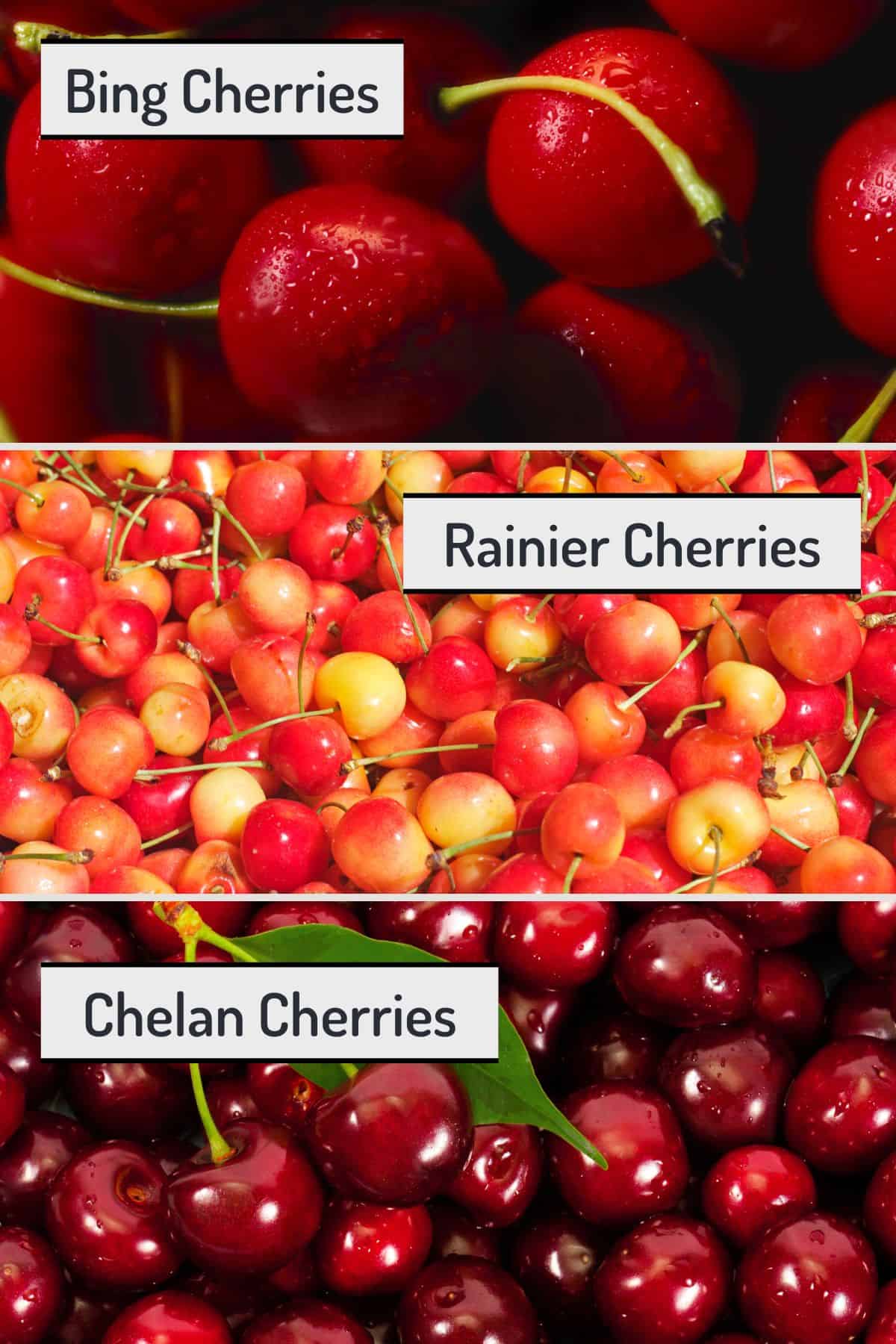
Storing Ripened Cherries
If you have an abundance of ripened cherries and wish to preserve them for future use, there are several storage methods to consider:
Refrigeration
Refrigeration is one of the most common methods for storing cherries. Place the cherries in airtight containers or sealed plastic bags and store them in the refrigerator. Properly refrigerated cherries can maintain their quality for up to two weeks, with some varieties lasting longer.
Freezing
Freezing cherries is another option for long-term storage. After washing and pitting the cherries, spread them in a single layer on a baking sheet and freeze until firm. Once firm, transfer the cherries to airtight containers or freezer bags and store them in the freezer. Frozen cherries can be used in various recipes and will keep for up to a year.
Canning
Canning cherries involves preserving them in jars with a sugar syrup or other liquid. This method allows cherries to be stored at room temperature for an extended period. Proper canning techniques must be followed to ensure food safety and maintain optimal fruit quality.
Drying
Drying cherries is another method of preservation. This can be done using a food dehydrator, an oven, or even by air-drying. Dried cherries can be stored in airtight containers in a cool, dry place and will keep well for several months. They can be enjoyed as a snack or used in baking and cooking.
Conclusion
Cherry ripening is influenced by multiple factors, including climate, variety, location, soil, and pollination. Understanding these factors and their impact on cherry ripening time allows growers to make informed decisions and optimize their cultivation practices. Early, mid-season, and late ripening cherry varieties offer a wide selection throughout the cherry season, catering to consumer preferences and ensuring a continuous supply of fresh cherries. Proper identification of ripe cherries, consideration of influential factors, and effective harvesting and storage techniques contribute to maintaining cherry quality and extending their shelf life. By considering all these factors and implementing appropriate practices, growers can enhance their cherry production and provide consumers with premium cherries throughout the season.
